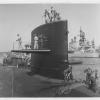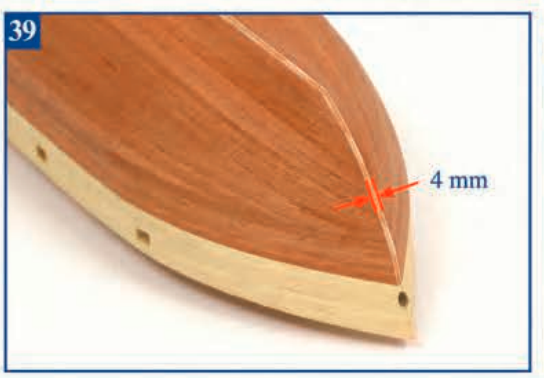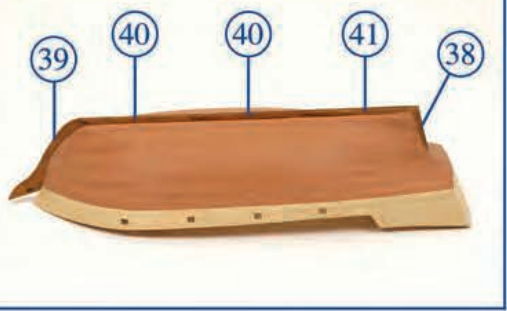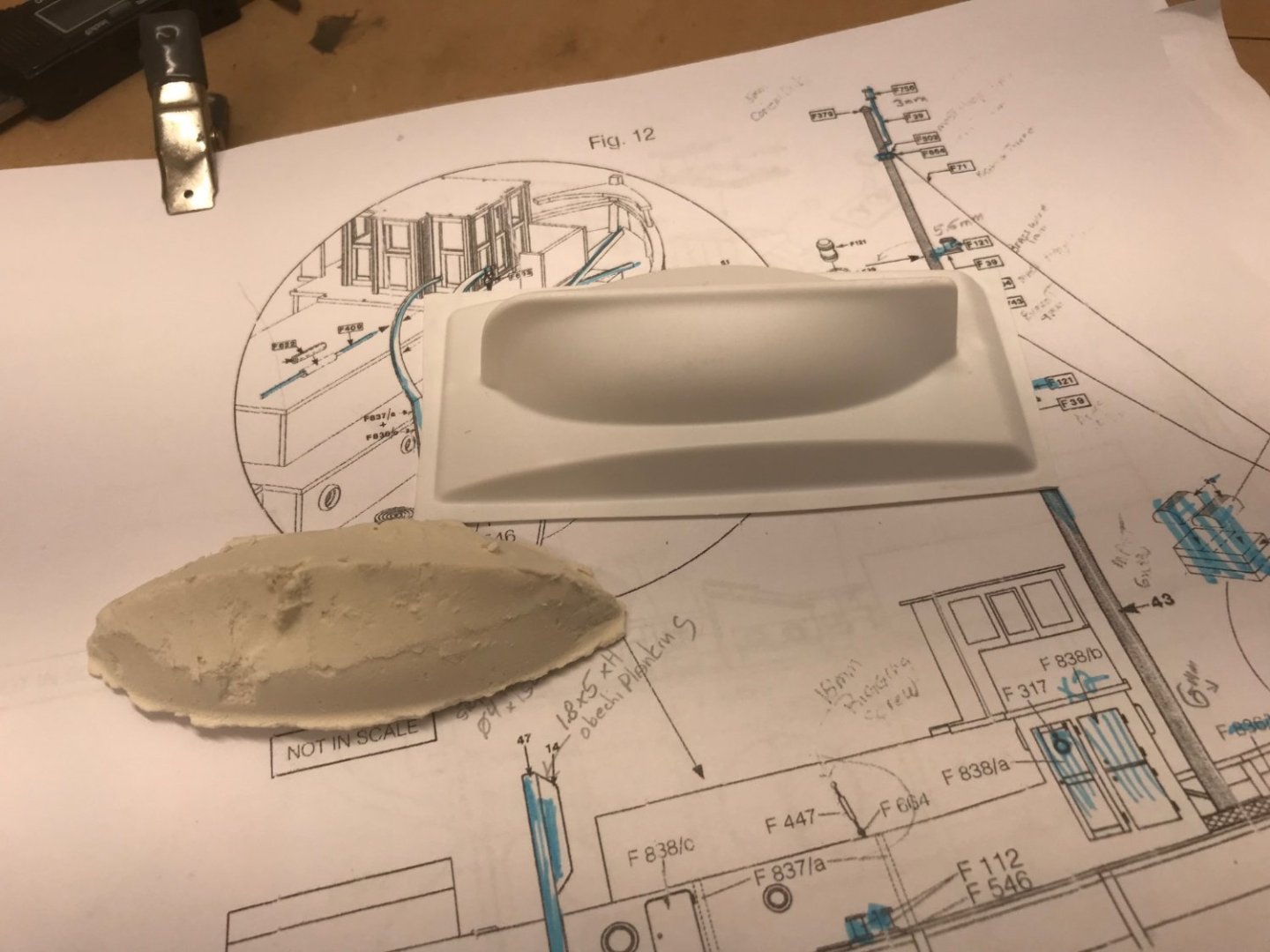
rtropp
NRG Member-
Posts
915 -
Joined
-
Last visited
About rtropp

Profile Information
-
Gender
Male
-
Location
Atlanta
-
Interests
Member: The Nautical Research Guild,
Atlanta Model Shipwrights
Current builds - The Siren by Model Shipways
Recent Profile Visitors
-
 Canute reacted to a post in a topic:
Proxxon mini lathe verdict
Canute reacted to a post in a topic:
Proxxon mini lathe verdict
-
 Mark P reacted to a post in a topic:
Proxxon mini lathe verdict
Mark P reacted to a post in a topic:
Proxxon mini lathe verdict
-
 Kauz reacted to a post in a topic:
Proxxon mini lathe verdict
Kauz reacted to a post in a topic:
Proxxon mini lathe verdict
-
 mtaylor reacted to a post in a topic:
Proxxon mini lathe verdict
mtaylor reacted to a post in a topic:
Proxxon mini lathe verdict
-
 Gregory reacted to a post in a topic:
Proxxon mini lathe verdict
Gregory reacted to a post in a topic:
Proxxon mini lathe verdict
-
rtropp started following solid hull vs. plank on bulkhead/frame , Proxxon mini lathe verdict , Planking, using CA glue, my Amati Fifie and 3 others
-
 DocRob reacted to a post in a topic:
Proxxon mini lathe verdict
DocRob reacted to a post in a topic:
Proxxon mini lathe verdict
-
Proxxon mini lathe verdict
rtropp replied to Srenner's topic in Modeling tools and Workshop Equipment
For me, the proxxon worked well for shaping masks and spars. It’s not a metal forming lathe, your getting a wood lathe for light use. The key that got me going was the process I ended up using to get some degree of accuracy. 1. Measure points along mast or spar from, hopefully, the 1-1 plans 2. Transfer to dowel. 3. Mounted on the lathe, cut small “rings” to the measured depth for each location where Thickness changes. 4. Use the cuts to control depth of sanding/filing on dowel 5.I use mostly sand paper on blocks of wood or small files to shape the mast or spar on the lathe. (Easier to control than chisels). 6. Once you have the series of cuts on the dowel it becomes almost like connect the dots. A tip from another member on using shrink tube (like in electronics use) led me to buy a small box of them. Anyway, I slide the grip end of the dowel into the three jaw chuck and use the shrink tube to help protect the wood. hope this helps. R -
 mtaylor reacted to a post in a topic:
The Naiad Frigate by Ed Tosti
mtaylor reacted to a post in a topic:
The Naiad Frigate by Ed Tosti
-
 mtaylor reacted to a post in a topic:
Planking, using CA glue, my Amati Fifie
mtaylor reacted to a post in a topic:
Planking, using CA glue, my Amati Fifie
-
I am becoming a big fan of CA in my modeling and don't write off thin CA. Many parts are difficult to clamp, and my hands are not as good as they used to be at holding parts and waiting for them to hold with slower drying glues. There are various applicators that are sold for thin CA that give a lot of control. Instead of trying to control from the bottle I use tiny containers (from amazon and primarily for nail or tattoo artists). I put a small amount of thin CA into the container and use the applicators giving very fine control and the ability to place tiny/precision amounts of the CA. The thin CA leaches into the wood joints and for most, does a fine job of holding almost instantly. My process has increasingly become holding parts in place on the model and apply tiny amounts of CA. The parts hold in a few seconds and a lot less fumbling with clamps. If I make a mistake (and I do, often) I use a little debonder or acetone and I get to try again. I do not use the spray hardener often. I find I don't really need it and the odor is obnoxious. My takeaway is that I reduced the need to hold or clamp parts which is tough on the arthritis. Really it is mainly second planking that I use other glues. Thanks
-
 mtaylor reacted to a post in a topic:
Looking for suggestions
mtaylor reacted to a post in a topic:
Looking for suggestions
-
Pore filler lacquer Recommended
rtropp replied to Krupi's topic in Painting, finishing and weathering products and techniques
Hi, I screwed up the hull of my Occre Albatross. Is there a way to paint over the varnished hull with white paint? Thanks, Richard -
Hi Allan, The instructions show that the planks as one piece that run the full length of the boat with the second planking running right up to the edge of the bow, stern and false keel. Then a preformed keel is attached. No rabbet that I can see. I have pasted images from the manual. I figured that the plank length was probably off but didn't think about a rabbet. I thought that somewhat realistic hull planks would look better than one long plank. I also cut up the deck planks. The instructions suggested marks at every 100 mm to simulate deck planks. I went ahead and just cut the planks and used a simple staggard pattern in some semblance of realism. I thought that I should do the same for the hull but wasn't sure what length to use. I have been using common staggering patterns seen on this site but fudging here and there for width.
-
Occre's Albatros a schooner dating back to 1920, when the vessel was built at the state shipyard in Amsterdam. At 1:100 it is 22 inches when finished. The instructions as well as pictures online show the albatross first and second planking with mostly full-length planks i.e., 20-22 inches long. I was wondering if the planking on the actual boat would have been made up of shorter planks and, if so, what length would they have been. Thanks, Richard
-
Steam Schooner, your lifeboats are along the lines of what I am trying to accomplish. Mine should be much easier because they will be covered by tarps so the inside will not be seen. My first try is to fill the plastic boats supplied with wood filler, than shape it and plank it. We'll see how it turns out. Richard
-
Dziadeczek, Those boats on at a glance are beautiful. I am inspired to try those no matter what I do with the tug. Roger, the Canute was built in 1931 in Denmark. Not sure if it used wood or metal and I may well end up painting the plastic to simulate metal as a quicker solution. But, I am trying to scratch build wood lifeboats/ship boats as a practice for a period warship I have on the shelves. From what I have seen of others work, building wooden ships boats could well end up as a much longer-term project. Thank you all for your help. Richard
-
Mark, I am starting to find examples. thusfar they are bread and butter, but I can keep looking. Thanks Dziadeczek, thank you for your reply. I do not have the Frolich available and I cannot find Post #89. I searched for your build but again came up empty. I guess I am not very good at searching. Can you tell me the title of your build or direct me to Post 89. I am very interested to see it. Thanks for the help, Richard
-
The model I am working on has thin, extruded plastic, lifeboats. (see photo) I would like to try to make one from wood. The lifeboat itself will be mounted with a cover tarp so only a portion of the outside will be seen. I dimly remember a posting, or article, that showed building a lifeboat from a mold. I searched but could not find the original posting or article. If anyone could give me a link or reference, I would appreciate it. So far, I tried filling the plastic lifeboat with wood filler. After it dried, I removed the molded lifeboat and next I will sand to fine tune the shape. Then I planned on trying to plank it in some way. I could also use the actual plastic form that came with the kit but not sure how well that can be planked. My last resort is to just trim and paint the form and use it on the model. This would not be my first choice but after a number of years away from modeling (Syrene was in progress) the ideas was to reacquire my building skills so I really want to finish off this model Tug so I can quickly get on to sailing model. I would appreciate any advice or a lead/link to existing demos, posts or articles. Thanks Richard
-
Wow. The knowledge that exists on this site is great. So far, the takeaway for me is that if I want to build a classic sailing ship, especially if I want to show more detail, I should strongly consider a plank on frame, like the Naiad or Swan projects that have instructions that really take you through the detail. (Especially if I want 1:64 or similar size.) It would probably be without rigging and blocks. The blocks are just getting too small for me to handle. If, on the other hand, I am looking at a 20th century warship or liner, I should consider the bread-and-butter style with an attempt at plating. Question: If I go with the bread-and-butter style, can the "slices" be hollowed out to reduce weight? 2nd question. Where would I get plans and/or cast parts for a WW1 warship? Thank you all for your time. A really great help to my planning. Richard
-
I have noticed that many model makers do not think highly if solid hull models, many of which seem to be fairly detailed builds. I have also seen that many POB/f makers will fill the space between bulkheads which seems to, in effect, make a solid hull. As arthritis takes a stronger hold on my hands, I have become curious to hear the opinions of more knowledgeable builders. thanks richard.
About us
Modelshipworld - Advancing Ship Modeling through Research
SSL Secured
Your security is important for us so this Website is SSL-Secured
NRG Mailing Address
Nautical Research Guild
237 South Lincoln Street
Westmont IL, 60559-1917
Model Ship World ® and the MSW logo are Registered Trademarks, and belong to the Nautical Research Guild (United States Patent and Trademark Office: No. 6,929,264 & No. 6,929,274, registered Dec. 20, 2022)
Helpful Links
About the NRG
If you enjoy building ship models that are historically accurate as well as beautiful, then The Nautical Research Guild (NRG) is just right for you.
The Guild is a non-profit educational organization whose mission is to “Advance Ship Modeling Through Research”. We provide support to our members in their efforts to raise the quality of their model ships.
The Nautical Research Guild has published our world-renowned quarterly magazine, The Nautical Research Journal, since 1955. The pages of the Journal are full of articles by accomplished ship modelers who show you how they create those exquisite details on their models, and by maritime historians who show you the correct details to build. The Journal is available in both print and digital editions. Go to the NRG web site (www.thenrg.org) to download a complimentary digital copy of the Journal. The NRG also publishes plan sets, books and compilations of back issues of the Journal and the former Ships in Scale and Model Ship Builder magazines.








